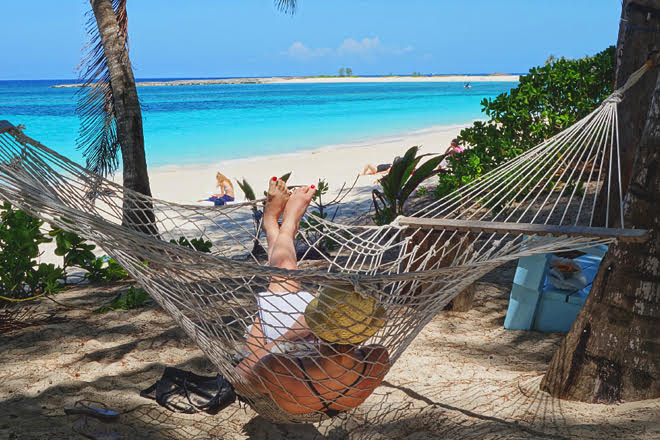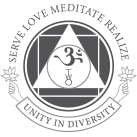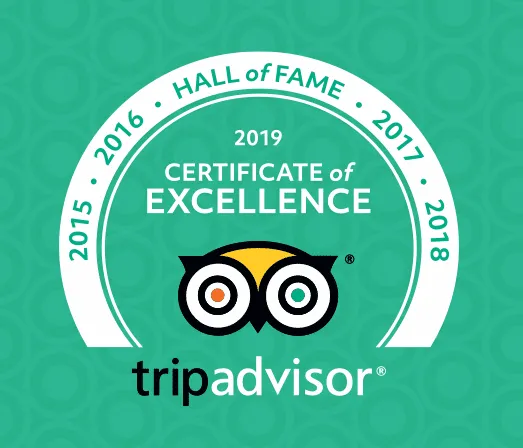Sivananda Bahamas Blog
Expand Your Horizons …
Our Blog
Relax Your Body, Relax Your Mind: The Yogic Lifestyle #4
How many facets of yoga do you know? How many do you practice? At the Sivananda Ashram Yoga Retreat Bahamas, a destination for yogis from around the world, yoga is based on five points that are practiced regularly in order to achieve wholeness in your mind, body, and soul.
In this five-part series, you can learn about each of these aspects of living yoga in your daily life. In the first three posts, we focused on the breath, yoga postures, and the yogic diet. This post is about relaxation.
*****
Relax Your Body First
Do you know what real relaxation is? Most people work hard all week so they can have a well-earned relaxation on the weekend. This can often consist of TV watching, wine drinking, or anything else that helps you turn off your brain.
According to the Sivananda Yoga lineage (and modern science!) this is only a false sense of relaxation. Real relaxation only comes when you consciously relax both your body and mind, giving you a true sense of deep peace.
Many people haven’t learned how to relax — or don’t have the patience to learn. But relaxation is simple and easy if you make it a priority and have a go-to protocol for engaging in conscious relaxation.
Relaxation Practice
The whole sequence can take about 10 minutes, so if you don’t have time, you can do a shorter version. You can even practice a one-minute version of a partial relaxation sitting down. Try it for your office, or repeat it every time you get into your car before you drive. The more often you practice, the more the body will get used to being relaxed. Then it will start to relax all on its own, and you’ll have much more energy.
The idea is to lay in a comfortable position so your body is symmetrical. In yoga, this position is called savasana (which translates as corpse pose.) You lay on your back, bring your arms about 45 degrees from your body, and spread your legs about as far apart as the width of a yoga mat. Rest your head directly between your shoulders, and close your eyes. This is the starting position.
From there, you practice something that science calls progressive muscle relaxation. You begin to soften one part of the body at a time, gradually working in sequence. In Sivananda Yoga, you start at the toes and move up the body (front and back), relaxing each part of the body until you make it to the face and head. Once the face and head are relaxed, you tell the brain and mind to relax also. Then you are closer to real relaxation. This process can be even more rejuvenating than a nap!
Also try this! Sit up tall, and focus on the small muscles in your face. See if you can draw the eyebrows apart from one another to relax the forehead. Soften the eyes. Relax the jaw by separating the back teeth from one another. Relax the mouth and lips. See if you can also relax the muscles supporting your neck. Let your shoulders drop. Close your eyes, breathe, and relax.
Were you holding tension before you practiced relaxing? Were you able to relax more with the exercise? Simple, small exercises like this will help you to eliminate that unnecessary tension and relax your body throughout your day. Even just by relaxing small muscles, like those of the face, hands, and toes, will help you achieve relaxation in a big way.
Swami Sivananda Says “Savasana combines pose and meditation. It gives rest not only for the body but also for the mind and soul. It gives relief, comfort, and ease. The muscles that are put under severe strain demand relaxation and rest. It is Savasana that promptly and efficiently ensures complete relaxation and perfect ease. Enter into silence. Meditate. The whole mystery of creation will be revealed unto you ...”
*****
Read the whole series
- Breathe Deep, Live Deep: The Yogic Lifestyle #1
- Mindfully Move Your Body: The Yogic Lifestyle #2
- You Are What You Eat: The Yogic Lifestyle #3
- Think Positive and Meditate: The Yogic Lifestyle #5
*****
Want to learn more? Immerse in a Sivananda Essentials Course — Rejuvenate while you are here and learn yogic lifestyle practices for physical, mental, and spiritual well-being in daily life.








